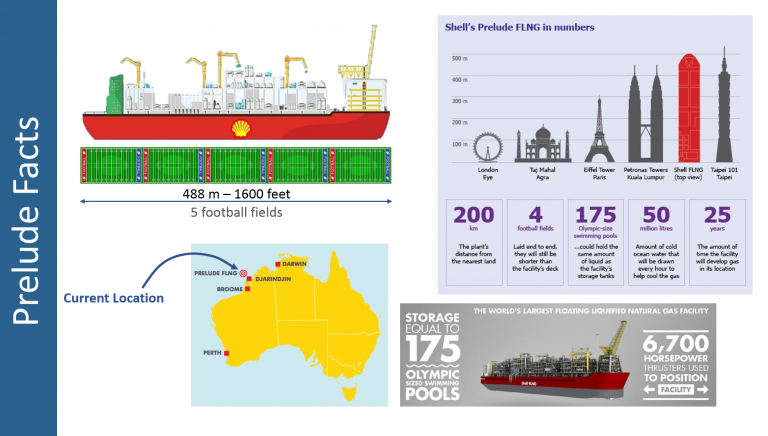Shell Prelude FLNG Saves Big with FieldComm Group Technologies

Utilizing device templates reduces commissioning and loop check time by 80% while remote access to advanced diagnostics enables predictive maintenance
The Shell Prelude Floating Liquefied Natural Gas (FLNG) plant/ship of Royal Dutch Shell, to be located in the Timor Sea off the North West coast of Australia, has been named the FieldComm Group 2017 Plant of the Year. This annual award is presented by FieldComm Group to recognize the people, companies and plant sites around the globe that are using the advanced capabilities of FOUNDATION™ Fieldbus, HART® and WirelessHART® technology in real-time applications for improved operations, maintenance and asset productivity. This is the second award presented to a Shell facility with the first awarded to Shell Scotford in Alberta, Canada in 2011.

Having recently completed its long sail from South Korea to its final destination 200-km from the Australian mainland, it will be connected to Deepwater gas wells and is scheduled to begin regular operations in 2018. The 488m x 71m vessel's 14 production facilities, rising eight stories above the deck and full of FieldComm Group technologies, will extract and process for transport about 3.6 million tonnes per year (Mtpa) of liquefied natural gas (LNG) during its 25-year lifespan.

"FieldComm technologies are used extensively in every phase of the Shell Prelude FLNG project and form the backbone of the intelligent predictive maintenance system," says Kyle Dickson, control and automation engineer for Shell Prelude FLNG. "The use of device templates is delivering excellent conformity and quality assurance throughout the commissioning process. This has enabled a small team to achieve impressive loop check rates whilst maintaining exceptionally high levels of quality assurance. Once commissioned, equipment and unit modules will use the extensive diagnostics and alerts provided by both HART and FOUNDATION Fieldbus technologies to great effect, specifically avoiding numerous plant trips and enabling unprecedented levels of remote support and deep-level diagnostics."
Rong Gul, senior automation engineer and subject matter expert (SME) for smart instrumentation and instrument asset management with Shell Global Solutions, reports that Prelude's process applications employ:
- More than 8,000 FOUNDATION Fieldbus devices, including 2,500 valve positioners, located on all control and monitoring devices, and connected only to the DCS;
- More than 4,500 HART devices connected to the DCS and PLCs via HART multiplexers, and used predominantly on devices connected to safety instrumented systems (SIS) and fire and gas (F&G) systems;
- WirelessHART is used on some specific unique applications.
Use of the advanced diagnostics and rationalized device alerts has enabled predictive and targeted maintenance execution. Prelude being in a particularly remote, isolated location, is dependent on having a fully realized remote monitoring group of engineers surveilling and advising on device issues. Commonly it has been possible to identify issues, specifically pertaining to control valves before a fault escalates and results in a plant upset or outage. While still in a start-up phase, Prelude is operating vast amounts of utility and marine systems, and the benefits of an intelligent instrument management system are already being realized.
At the peak of its recent commissioning efforts, they report that Prelude's staff was performing more than 500 loop checks per week, and checking multiple streams of complex functions. The vessel's utilities plant was also running 24/7, which made maintenance challenging. Thanks to using templates for its parameters, Prelude's staff and contractors achieved:
- Total time savings of 80% for device commissioning and loop checking across all devices using device templates
- Time savings for the valve positioner loop check procedure was more than 80% for the full loop test;
- Tested all device types during the FAT (Factory Acceptance Test) in less than three days, compared to previous test using traditional methods, which took more than two days to test just three device types; and
- Human error during FAT was quickly identified allowing for fast correction
"In a nutshell, proactive maintenance was embedded from Day 1 on this project, rather than adding it as a work process on a running facilities," explains Gul. "Factory acceptance test (FAT) preparation and testing, training, templating, selection of smart instrumentation, rigid work processes, and a management and maintenance organization firmly supporting the technology are mandatory to make proactive maintenance succeed."
